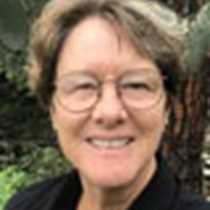Today was a bit of a shock to our system. Days of pristine seas behind us, this morning we woke to the presence of other boats in Academy Bay (named after the American Academy of Science visit in 1905-6), with the buildings, stores and cars of civilization coming into view.
However, the islands have been inhabited, on and off, for a couple of centuries by now. Puerto Ayora is the largest settlement – once a town, now a small city. Here are located most of the businesses involved in travel, shipping, conservation and management. However, we are here for several good reasons. One is to see the efforts by the National Park and conservation organizations for increasing the population of giant tortoises (once decimated to very low numbers). Another is to give our guests a chance to see, feel and hear how humans live in the islands (and spend money if desired); and finally, to access the highlands of one of the biggest islands, and get up-up-up into the green zones to see tall trees, endemic plants and wandering tortoises in their ancestral home.
The tortoise rearing center is close to “downtown”, and right next to the Charles Darwin Research Station. In their new exhibit hall, one can see some of the amazing collection, compiled over the decades of their presence here, and of high historical importance. The mural inside reflected almost perfectly our experience over the last few days: whales, rays, frigates, turtles…check!
Afterwards, everyone was free to disperse through town and people-watch, wildlife watch (at the fishermen’s wharf), shop, drink beer or have a coffee. By bus we traveled into the highlands for lunch, but stopping by a small farm where coffee, bananas and sugar cane are grown. Of particular interest was a chance to sample the products derived from these (including “firewater”, or agua ardiente). Some folks chose to visit the Tomas De Berlanga School and interact with some of the school children. Our funding provides scholarships to quite a few students, because we feel it is important to get children from across the socio-economic spectrum of the population up-and-ready with the English language and other skills, not taught regularly in the local public institutions.
After lunch in the cool highlands, we travelled by bus yet further into the highlands of the island of Santa Cruz. Our destination was a bit of farmland that by happenstance lies on the migration route of giant tortoises…and has for millennia. On this island, these tortoises are interested in only two things: food and procreation. Food supply is determined by rainfall, and at this time of year, the best food can be found primarily in the highlands – the lowlands are dry as a bone, with little to eat. So, following the logic – where tortoises can be found eating, tortoises can find each other to mate with, as well.
What a day! And to top it off – music and dancing while listening and watching a local talented troupe “Eco Arte”!







